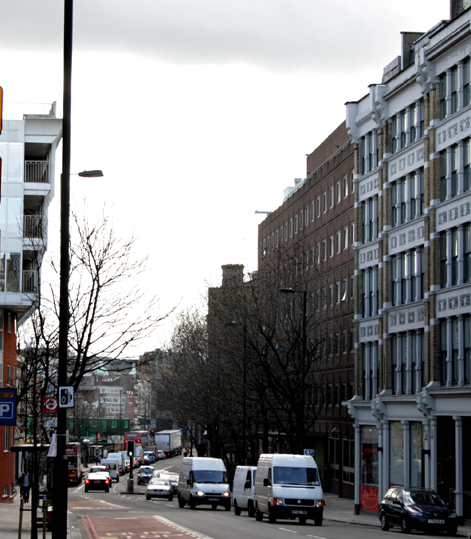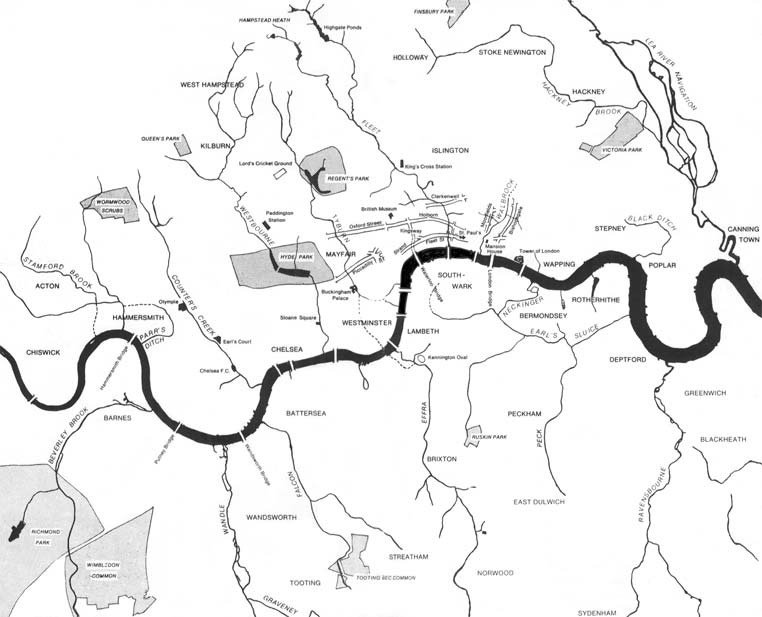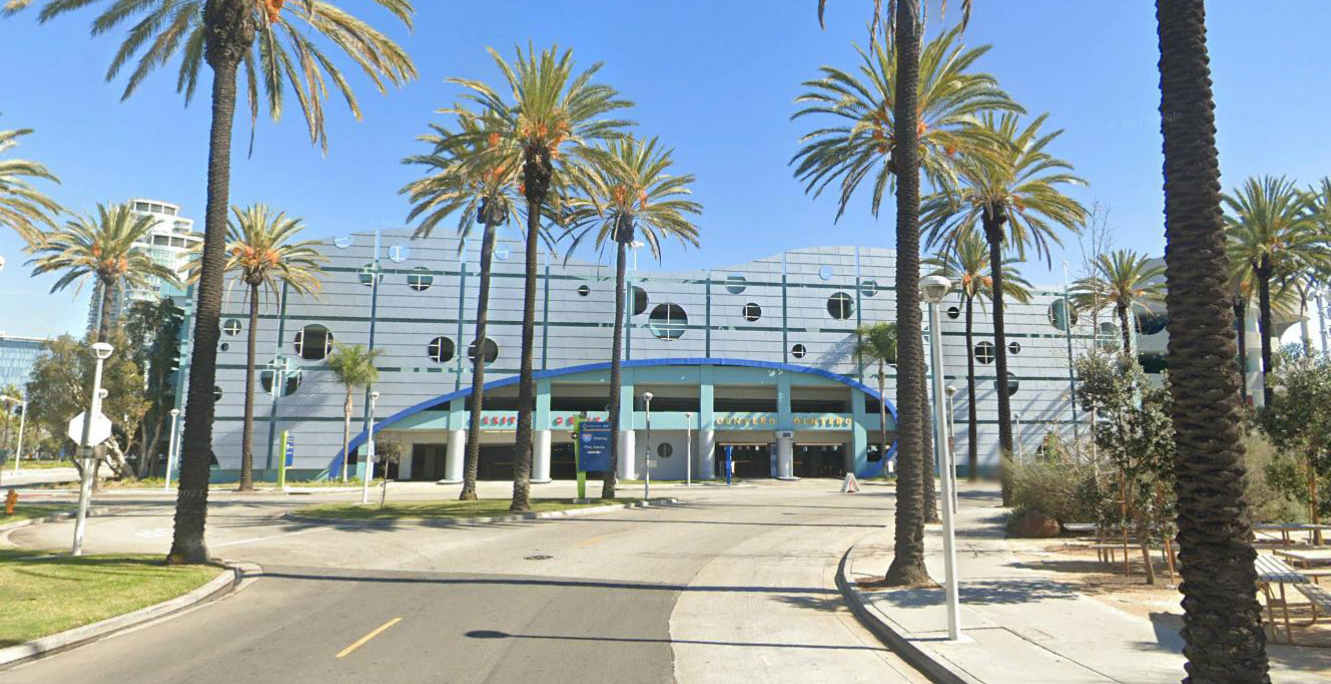|
Farringdon Road
Farringdon Road is a road in Clerkenwell, London. Route Farringdon Road is part of the A201 route connecting King's Cross to Elephant and Castle. It goes southeast from King's Cross, crossing Rosebery Avenue, then turns south, crossing Clerkenwell Road before going past Farringdon station. It finishes on the border between the City of London, the London Borough of Camden and the London Borough of Islington, at a junction with Charterhouse Street. Its line continues into the City as Farringdon Street. History The road's construction, taking almost 20 years between the 1840s and the 1860s, is considered one of the greatest urban engineering achievements of the 19th century. It was one of the first engineered multi-lane roads, and buried the River Fleet in a system of tunnels, solving one of London's most significant sanitary problems. Its construction also included the building of the world's first stretch of underground railway, the Metropolitan Railway that later b ... [...More Info...] [...Related Items...] OR: [Wikipedia] [Google] [Baidu] |
Farringdon Road
Farringdon Road is a road in Clerkenwell, London. Route Farringdon Road is part of the A201 route connecting King's Cross to Elephant and Castle. It goes southeast from King's Cross, crossing Rosebery Avenue, then turns south, crossing Clerkenwell Road before going past Farringdon station. It finishes on the border between the City of London, the London Borough of Camden and the London Borough of Islington, at a junction with Charterhouse Street. Its line continues into the City as Farringdon Street. History The road's construction, taking almost 20 years between the 1840s and the 1860s, is considered one of the greatest urban engineering achievements of the 19th century. It was one of the first engineered multi-lane roads, and buried the River Fleet in a system of tunnels, solving one of London's most significant sanitary problems. Its construction also included the building of the world's first stretch of underground railway, the Metropolitan Railway that later b ... [...More Info...] [...Related Items...] OR: [Wikipedia] [Google] [Baidu] |
Subterranean Rivers Of London
The subterranean or underground rivers of London are or were the direct or indirect tributaries of the upper estuary of the Thames (the Tideway), that were built over during the growth of the metropolis of London. They now flow through culverts, with some of them now integral parts of London's sewerage system and diverted accordingly. Subterranean rivers in London North of the River Thames * Black Ditch * Hackney Brook * The River Moselle (all three subtributaries via the Lea) * Muswell Stream''London's Lost Rivers'' (2011) Paul Talling, Random House, pp148-150 (sub-sub-tributary via [...More Info...] [...Related Items...] OR: [Wikipedia] [Google] [Baidu] |
Streets In The London Borough Of Camden
Streets is the plural of street, a type of road. Streets or The Streets may also refer to: Music * Streets (band), a rock band fronted by Kansas vocalist Steve Walsh * ''Streets'' (punk album), a 1977 compilation album of various early UK punk bands * '' Streets...'', a 1975 album by Ralph McTell * '' Streets: A Rock Opera'', a 1991 album by Savatage * "Streets" (song) by Doja Cat, from the album ''Hot Pink'' (2019) * "Streets", a song by Avenged Sevenfold from the album ''Sounding the Seventh Trumpet'' (2001) * The Streets, alias of Mike Skinner, a British rapper * "The Streets" (song) by WC featuring Snoop Dogg and Nate Dogg, from the album ''Ghetto Heisman'' (2002) Other uses * ''Streets'' (film), a 1990 American horror film * Streets (ice cream), an Australian ice cream brand owned by Unilever * Streets (solitaire), a variant of the solitaire game Napoleon at St Helena * Tai Streets (born 1977), American football player * Will Streets John William Streets (24 March 1886 ... [...More Info...] [...Related Items...] OR: [Wikipedia] [Google] [Baidu] |
De Beers
De Beers Group is an international corporation that specializes in diamond mining, diamond exploitation, diamond retail, diamond trading and industrial diamond manufacturing sectors. The company is active in open-pit, large-scale alluvial and coastal mining. It operates in 35 countries and mining takes place in Botswana, Namibia, South Africa, Canada and Australia. From its inception in 1888 until the start of the 21st century, De Beers controlled 80% to 85% of rough diamond distribution and was considered a monopoly. Competition has since dismantled the complete monopoly; the De Beers Group now sells approximately 29.5% of the world's rough diamond production by value through its global sightholder and auction sales businesses. The company was founded in 1888 by British businessman Cecil Rhodes, who was financed by the South African diamond magnate Alfred Beit and the London-based N M Rothschild & Sons bank. In 1926, Ernest Oppenheimer, a German immigrant to Britain and l ... [...More Info...] [...Related Items...] OR: [Wikipedia] [Google] [Baidu] |
George Gissing
George Robert Gissing (; 22 November 1857 – 28 December 1903) was an English novelist, who published 23 novels between 1880 and 1903. His best-known works have reappeared in modern editions. They include '' The Nether World'' (1889), '' New Grub Street'' (1891) and '' The Odd Women'' (1893). Biography Early life Gissing was born on 22 November 1857 in Wakefield, Yorkshire, the eldest of five children of Thomas Waller Gissing, who ran a chemist's shop, and Margaret (née Bedford). His siblings were: William, who died aged twenty; Algernon, who became a writer; Margaret; and Ellen.Pierre Coustillas,Gissing, George Robert (1857–1903) (), ''Oxford Dictionary of National Biography'', online), Oxford University Press, 2004. Accessed 17 June 2012. His childhood home in Thompson's Yard, Wakefield, is maintained by The Gissing Trust. Gissing was educated at Back Lane School in Wakefield, where he was a diligent and enthusiastic student. His serious interest in books began at the age ... [...More Info...] [...Related Items...] OR: [Wikipedia] [Google] [Baidu] |
Multi-storey Car Park
A multistorey car park (British English, British and Singapore English) or parking garage (American English), also called a multistory, parking building, parking structure, parkade (mainly Canadian English, Canadian), parking ramp, parking deck or indoor parking, is a building designed for car, motorcycle & bicycle parking and where there are a number of floors or levels on which parking takes place. It is essentially an indoor, stacked car park. The first known multistory facility was built in London in 1901, and the first underground parking was built in Barcelona in 1904. (See History, below.) The term multistory is almost never used in the US, since parking structures are almost all multiple levels. Parking structures may be HVAC, heated if they are enclosed. Design of parking structures can add considerable cost for planning new developments, and can be mandated by cities in new building parking requirements. Some cities such as London have abolished previously enacted ... [...More Info...] [...Related Items...] OR: [Wikipedia] [Google] [Baidu] |
Royal Mail Mount Pleasant Sorting Office
The Mount Pleasant Mail Centre (often shortened as Mount Pleasant, known internally as the Mount and officially known as the London Central Mail Centre) is a mail centre operated by Royal Mail in London, England. The site has previously operated as one of the largest sorting offices in the world. It is located in the London Borough of Islington, on the boundary with the London Borough of Camden. History The street called Mount Pleasant gained its name ironically in the 1730s after locals had begun to dump cinders and other refuse. The centre was officially opened on 30 August 1889 when the Post Office (Sites) Act (52 & 53 Vict. Ch. ccix) was passed by Parliament. It was built on the location of the former Coldbath Fields Prison that ceased to function in 1885. The original prison gate was incorporated into the Post Office building and not demolished until 1901. The remaining sections of the prison were demolished in 1929, when the new wing was built as an extension to the Lett ... [...More Info...] [...Related Items...] OR: [Wikipedia] [Google] [Baidu] |
Exmouth Market
Exmouth Market is a semi- pedestrianised street in Clerkenwell in the London Borough of Islington, and the location of an outdoor street market of 32 stalls. History Exmouth Market draws its name from the Exmouth Arms Pub that is centrally situated in the street. The area has been a market place since the 1890s and a number of the street's buildings date from the 19th century. Also centrally located on the block of the street opposite the Exmouth Arms is the church of Our Most Holy Redeemer, Clerkenwell, built in 1887 on the site of the Spa Fields Chapel. The church is London's only Italian basilica-style church. The south-east corner of the street was the site for the London Spa which dates back to 1730 and is one of Clerkenwell's most famous resorts. It was rebuilt several times and called the London Spa until 2002. It is now known as Spa Fields. 1990s: Rehabilitation The street and surrounding area had previously held a reputation as a run down and seedy part of Central ... [...More Info...] [...Related Items...] OR: [Wikipedia] [Google] [Baidu] |
Smithfield, London
Smithfield, properly known as West Smithfield, is a district located in Central London, part of Farringdon Without, the most westerly ward of the City of London, England. Smithfield is home to a number of City institutions, such as St Bartholomew's Hospital and livery halls, including those of the Butchers' and Haberdashers' Companies. The area is best known for the Smithfield meat market, which dates from the 10th century, has been in continuous operation since medieval times, and is now London's only remaining wholesale market. Smithfield's principal street is called ''West Smithfield'', and the area also contains London's oldest surviving church, St Bartholomew-the-Great, founded in AD 1123. The area has borne witness to many executions of heretics and political rebels over the centuries, as well as Scottish knight Sir William Wallace, and Wat Tyler, leader of the Peasants' Revolt, among many other religious reformers and dissenters. Smithfield Market, a Grad ... [...More Info...] [...Related Items...] OR: [Wikipedia] [Google] [Baidu] |
World War I
World War I (28 July 1914 11 November 1918), often abbreviated as WWI, was List of wars and anthropogenic disasters by death toll, one of the deadliest global conflicts in history. Belligerents included much of Europe, the Russian Empire, the United States, and the Ottoman Empire, with fighting occurring throughout Europe, the Middle East, Africa, the Pacific Ocean, Pacific, and parts of Asia. An estimated 9 million soldiers were killed in combat, plus another 23 million wounded, while 5 million civilians died as a result of military action, hunger, and disease. Millions more died in Genocides in history (World War I through World War II), genocides within the Ottoman Empire and in the Spanish flu, 1918 influenza pandemic, which was exacerbated by the movement of combatants during the war. Prior to 1914, the European great powers were divided between the Triple Entente (comprising French Third Republic, France, Russia, and British Empire, Britain) and the Triple A ... [...More Info...] [...Related Items...] OR: [Wikipedia] [Google] [Baidu] |
Zeppelin
A Zeppelin is a type of rigid airship named after the German inventor Count Ferdinand von Zeppelin () who pioneered rigid airship development at the beginning of the 20th century. Zeppelin's notions were first formulated in 1874Eckener 1938, pp. 155–157. and developed in detail in 1893.Dooley 2004, p. A.187. They were patented in Germany in 1895 and in the United States in 1899. After the outstanding success of the Zeppelin design, the word ''zeppelin'' came to be commonly used to refer to all rigid airships. Zeppelins were first flown commercially in 1910 by Deutsche Luftschiffahrts-AG (DELAG), the world's first airline in revenue service. By mid-1914, DELAG had carried over 10,000 fare-paying passengers on over 1,500 flights. During World War I, the German military made extensive use of Zeppelins as bombers and as scouts, resulting in over 500 deaths in bombing raids in Britain. The defeat of Germany in 1918 temporarily slowed the airship business. Although DELAG establi ... [...More Info...] [...Related Items...] OR: [Wikipedia] [Google] [Baidu] |
The Guardian
''The Guardian'' is a British daily newspaper A newspaper is a periodical publication containing written information about current events and is often typed in black ink with a white or gray background. Newspapers can cover a wide variety of fields such as politics, business, sport .... It was founded in 1821 as ''The Manchester Guardian'', and changed its name in 1959. Along with its sister papers ''The Observer'' and ''The Guardian Weekly'', ''The Guardian'' is part of the Guardian Media Group, owned by the Scott Trust Limited, Scott Trust. The trust was created in 1936 to "secure the financial and editorial independence of ''The Guardian'' in perpetuity and to safeguard the journalistic freedom and liberal values of ''The Guardian'' free from commercial or political interference". The trust was converted into a limited company in 2008, with a constitution written so as to maintain for ''The Guardian'' the same protections as were built into the structure of the ... [...More Info...] [...Related Items...] OR: [Wikipedia] [Google] [Baidu] |







